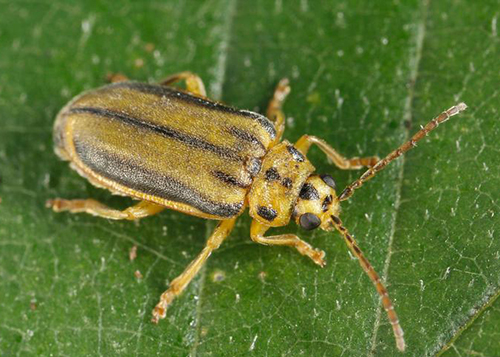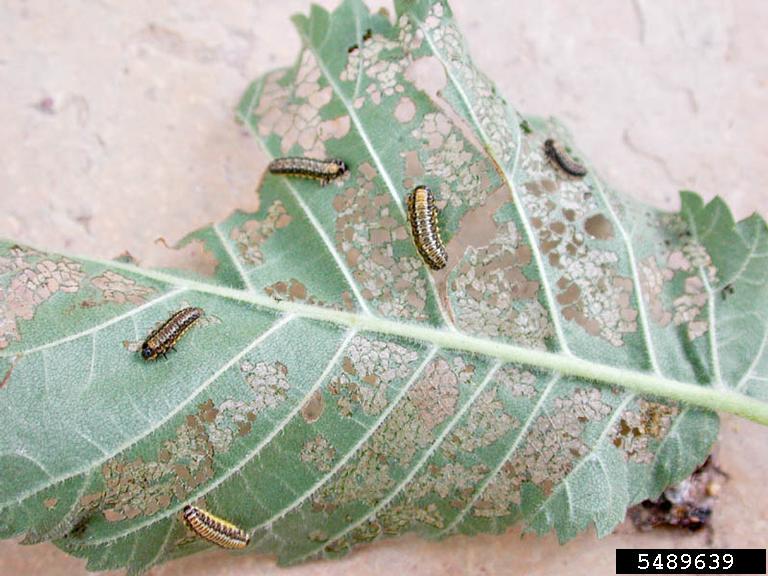Integrated Pest Management
Elm Leaf Beetle
Xanthogaleruca luteola
Pest Description
- adults: ~ 1/4 inch; yellowish green; black stripes on wings
- larvae: initially black; become yellowish after feeding
- older larvae: ~1/3 inch; rows of black projections on their backs that resemble stripes
- eggs: yellow; laid in double or triple rows of up to 25 on the undersides of leaves
Host Plants, Diet & Damage
- elm and zelkova
- larvae skeletonize and adults chew holes in leaves
- damaged leaves turn brown and may drop prematurely
- trees may die after multiple years of repeated defoliations
- adults can become an overwintering structural nuisance
Biology, Life Cycle & Damaging Life Stage
- overwinter as adults on or near host trees
- adults emerge in spring when new leaf growth starts
- eggs are laid on the undersides of leaves
- larvae feed in groups on undersides of leaves
- larvae pupate on the ground or in bark fissures
- new adults emerge in about 2 weeks and lay eggs
- two generations per year are common
- larvae are the primary damaging life stage; adults also cause damage
IPM Recommendations
- Manage trees to improve or maintain overall health.
- Pesticides are not typically needed.
- Monitor the undersides of leaves for eggs and larvae or take note of previous year’s populations and damage.
- Consider foliar sprays (azadirachtin; carbamate; pyrethroid; spinosyn) for newly hatched larvae.
- Apply a soil (imidacloprid; dinotefuran) or foliar systemic (acephate) after leaf expansion.
- Apply an insecticidal bark band (carbamate; pyrethroid) a few feet wide to intercept 1st generation larvae.




